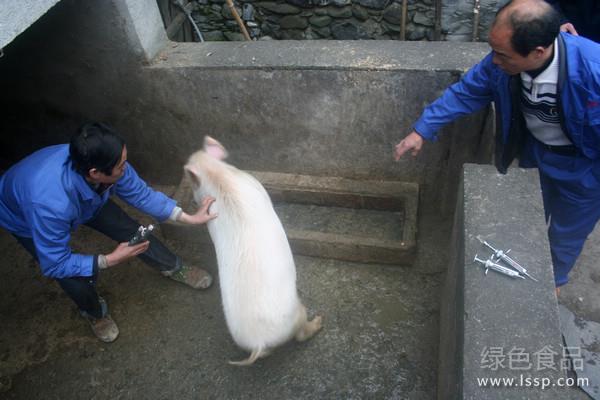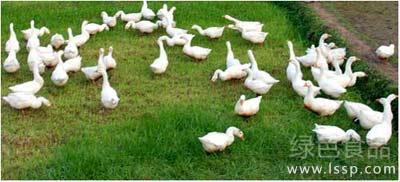Precautions for livestock vaccination to prevent side effects

Livestock immunity
Immunization of livestock and poultry is a process of artificially acquired immunity, which stimulates the specific resistance of animals and reduces their susceptibility through vaccination, so as to prevent and control the occurrence of infectious diseases of livestock and poultry, reduce the mortality of livestock and poultry, and reduce the loss of breeding industry.
Animal immunization is divided into preventive vaccination and emergency vaccination. Vaccination is a planned way of vaccination in areas where certain infectious diseases often occur or where infectious diseases are potentially threatened. In the general sense, vaccination mainly refers to the usual vaccination. Emergency vaccination is an emergency vaccination method for animals in epidemic areas and threatened areas in order to quickly control the spread of the epidemic disease and extinguish the epidemic disease.
Whether it is preventive vaccination or emergency vaccination, we must formulate reasonable immunization procedures, strictly operate norms, abide by matters needing attention, and ensure immune safety and immune quality. Once side effects occur in the process of immunization, effective measures must be taken in time. The following are the treatments for immune side effects:
I. immune method and immune dose
The side effects of different vaccines, especially those produced by the same production process, will be superimposed when they are injected at the same time, so unless it is proved by clinical trials that different vaccines can be injected separately at the same time, immunization must be carried out in strict accordance with the immunization methods and doses specified in the instructions for the use of the vaccine.
Small-scale pre-tests should be carried out before immunization with different batches of vaccines. Before using different batches of foot-and-mouth disease vaccine for large-scale centralized immunization, especially for the large-scale field, it is necessary to pre-test 5-10 immunized animals in advance to ensure that there will be no serious side effects before large-scale immunization.
Diagnosis and treatment of immune side effects
(1) diagnosis of immune side effects. The adverse reactions that have nothing to do with immunity when vaccinated into animals are called immune side effects. The immune side effects can be divided into general side effects, severe side effects and death.
1. General side effects. After the animal compulsory immunization personnel immunized the immunized animals with foot-and-mouth disease according to the prescribed procedure, the general side effects were swelling of the injection site, lameness of the limb on one side of the injection, elevated body temperature, accelerated breathing, fasting or short apnea, decreased lactation and so on.
2. Severe side effects. After the animal compulsory immunization personnel immunized the immunized animals with foot-and-mouth disease in accordance with the prescribed procedures, within two days, serious side effects such as restlessness in standing, inability to lie on the ground, dyspnea, congestion or edema of visible mucosa, muscle tremor, rumen dyspnea, foaming at mouth, falling to the ground convulsions, nasal bleeding, abortion of pregnant animals (including preterm delivery), etc.
3. Death due to side effects. After the compulsory immunization personnel of animals are immunized with foot-and-mouth disease in accordance with the prescribed procedures, those who die without treatment, die ineffective after treatment, or die of miscarriage (including premature delivery) within five days shall be regarded as side effects.
(2) Emergency treatment of immune side effects
1. General side effects. After receiving the adverse reaction report, the township veterinary station shall promptly guide the livestock breeder to deal with the general side effect.
2. Severe side effects. If it is identified as a serious side effect on the spot, emergency treatment can be carried out according to the following treatment plan.
(1) the treatment of the most acute type. If serious side effects occur within 2 hours after vaccination, one or more of the following schemes can be selected for emergency treatment according to the specific circumstances. Ⅰ . Subcutaneous injection of 0.1% epinephrine hydrochloride, 5 ml for cattle, 1 ml for pigs and sheep. Depending on the degree of remission, the injection can be repeated after 20 minutes. Ⅱ . Intramuscular injection of promethazine hydrochloride, cattle 500 mg, pig, sheep 100 mg. Ⅲ . Intramuscular injection of dexamethasone sodium phosphate, 30 mg for cattle, 10 mg for pigs and sheep (not for pregnant animals).
(2) treatment of shock livestock. If livestock shock occurs within 2 hours after immunization, one or more of the following schemes can be selected for emergency treatment. Ⅰ . The treatment was carried out according to the most acute treatment. Ⅱ . Quickly acupuncture ear tip, tail root, hoof head, big pulse point and other parts, bloodletting a little. Ⅲ . Add norepinephrine (10 mg for cattle, 2 mg for pigs and sheep) to 10% glucose injection (1500 ml for cattle, 500ml for pigs and sheep). After the livestock wakes up and the pulse rhythm gradually recovers, remove this group of drugs and replace them with 5% glucose injection (2000 ml for cattle, 500ml for pigs and sheep), add vitamin C (5g for cattle, 1g for pigs and sheep), vitamin B6 (3000 mg for cattle, 500mg for pigs and sheep), intravenous drip, and then use 5% sodium bicarbonate solution (500ml for cattle, 100ml for pigs and sheep), intravenous drip.
(3) treatment of acute type. The method of treatment and medication are the same as the most acute type.
- Prev

Technical points of "recommended Goose raising" to improve Economic benefit
Technical points of "recommended Goose raising" to improve Economic benefit
- Next

Management of young ducks (31-20 days old)
The management goal of young ducks is to cultivate strong and good physique. 1. To step up exercise, we should drive the ducks to walk slowly around the playground every day, or go outside to slowly drive grazing to strengthen their physique. People should get in touch with ducks more and improve their courage, so that they will not be afraid of shock when they enter the laying period. two。 The feeding of young ducks is a skeletal muscle stage, and the principle of nutrition in the breeding stage is that it should be low rather than high, and the principle of feed is that it should be coarse rather than fine. Fine material
Related
- On the eggshell is a badge full of pride. British Poultry Egg Market and Consumer observation
- British study: 72% of Britons are willing to buy native eggs raised by insects
- Guidelines for friendly egg production revised the increase of space in chicken sheds can not be forced to change feathers and lay eggs.
- Risk of delay in customs clearance Australia suspends lobster exports to China
- Pig semen-the Vector of virus Transmission (4)
- Pig semen-the Vector of virus Transmission (3)
- Five common causes of difficult control of classical swine fever in clinic and their countermeasures
- Foot-and-mouth disease is the most effective way to prevent it!
- PED is the number one killer of piglets and has to be guarded against in autumn and winter.
- What is "yellow fat pig"? Have you ever heard the pig collector talk about "yellow fat pig"?

